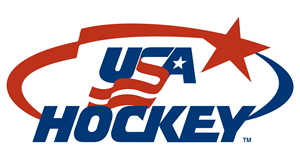Hockey Myths
There are several common myths about the sport of ice hockey that deter families from getting involved in a great and exciting sport. Over the years, we have all heard:
- To take part in ice hockey costs a fortune to get started
- Hockey games are played at ungodly hours
- Teams have to travel several hours to play a hockey game
- Hockey is too violent and presents an unreasonable risk of injury
However, these myths are just that . . . myths.
Myth # 1 - Ice hockey costs a fortune to get started.
FALSE - One can get started with ice hockey for purchasing all necessary equipment for under $200, not “thousands of dollars” that many erroneously believe. This is the cost of a starter kit at most chain hockey stores like Pure Hockey and Hockey Monkey. The equipment can also be purchased on-line from these retailers and includes skates, a helmet, chest protector, elbow pads, pants, shin guards, stick and, during certain promotions, even an equipment bag.
MAYHA has free equipment rental. Equipment can be tried on and checked out at the beginning of the season and checked back in after the season has ended.
Myth # 2 - Ice hockey games are played at ungodly hours.
FALSE - Learn-to-skate hockey programs are conducted in house, requiring no travel. Mite level plays jamboree style games which are groups of short fast games grouped together. Typically jamborees start late morning to early afternoon. Even games at the travel level are mostly played in the late mornings or early afternoon. Early morning or late evening games are the exception, not the rule.
Myth # 3 - The team has to travel several hours to play a hockey game.
FALSE - Unless a participant is playing at the highest level of youth hockey, most games are at facilities within a 1 to 1.5 hrs. from Medford, WI.
Myth # 4 - Hockey is too violent and presents an unreasonable risk of injury.
FALSE - USA Hockey, the governing body of youth hockey in the United States, does not permit body checking at the Pee Wee (12U), Squirt (10U) and Mite (8U & 6U) levels. Body checking does not start until the Bantam or 14U level. Canada has recently followed USA Hockey’s lead by also banning body checking until the 14U level. There is less physical contact permitted in hockey at the younger ages than football and lacrosse. Does this mean a participant cannot get injured? Of course not. There is always a risk of injury in hockey as there is in all sports.
Fact # 1 - It’s about the Kids.
TRUE - Hockey has its own set of unique rules and perhaps is not one of the mainstream sports that parents grew up with when they were children. However, this should not deter parents from permitting their child to play hockey, or at least try it. Remember, it’s our children that are taking part, not the parents.
Oops!
You have unsaved elements
Please save or cancel the pending changes to the elements within your page and then try saving again.


